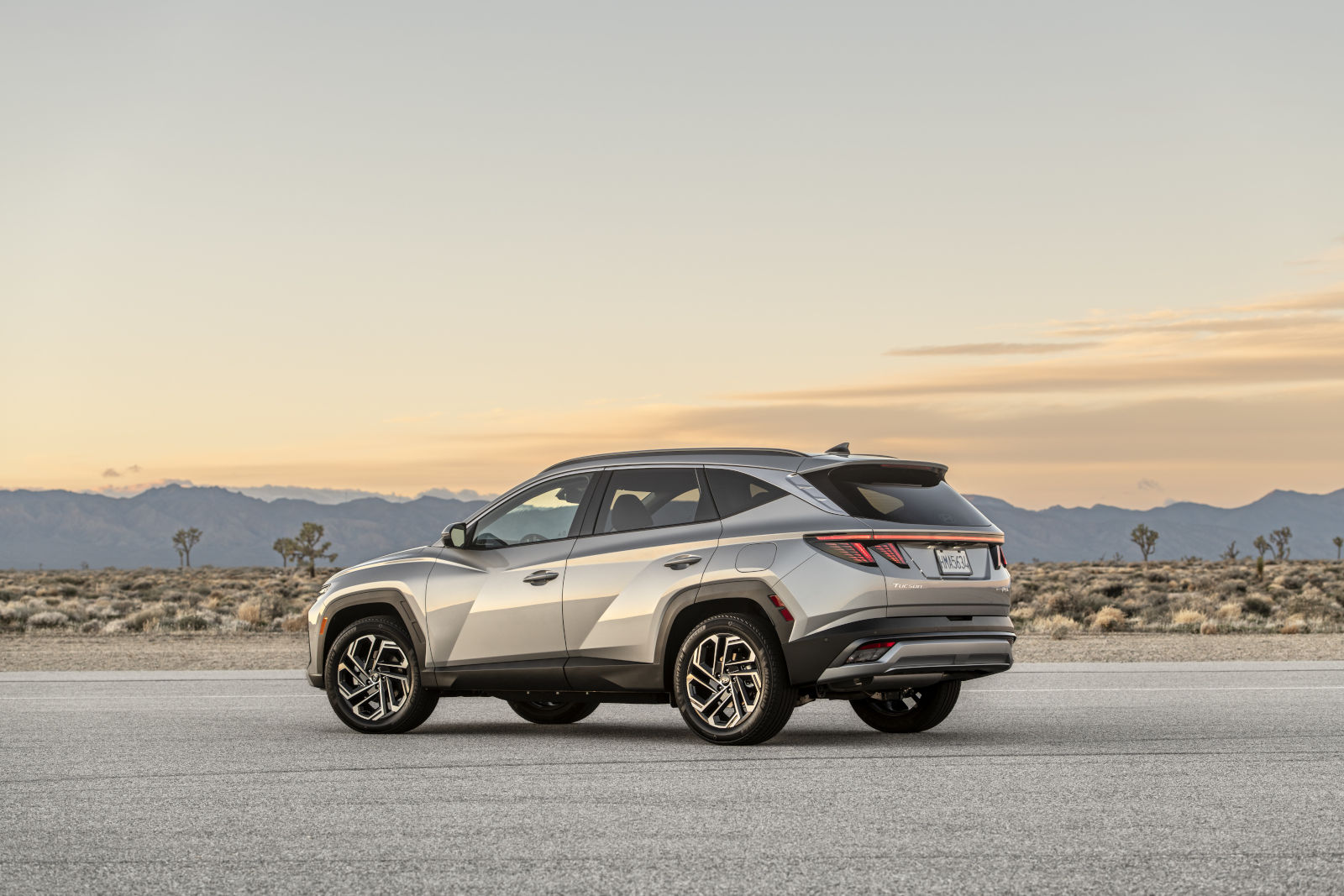Navigating the Future of Fuel: Exploring the 2025 Hyundai Tucson’s Powertrain Options
Navigating the Future of Fuel: Exploring the 2025 Hyundai Tucson’s Powertrain Options
Introduction
In this auspicious occasion, we are delighted to delve into the intriguing topic related to Navigating the Future of Fuel: Exploring the 2025 Hyundai Tucson’s Powertrain Options. Let’s weave interesting information and offer fresh perspectives to the readers.
Table of Content
Navigating the Future of Fuel: Exploring the 2025 Hyundai Tucson’s Powertrain Options

The Hyundai Tucson, a popular compact SUV, continues to evolve, with the 2025 model year promising a diverse range of powertrain options catering to various driving needs and environmental concerns. This article delves into the anticipated fuel types for the 2025 Tucson, highlighting their key features, benefits, and potential impact on the driving experience.
A Hybrid of Possibilities: The 2025 Tucson’s Powertrain Lineup
The 2025 Hyundai Tucson is expected to offer a variety of powertrains, emphasizing a balance between performance, efficiency, and environmental responsibility. Here’s a breakdown of the anticipated options:
1. Traditional Internal Combustion Engine (ICE):
- Fuel Type: Gasoline
- Expected Engine Options: A range of naturally aspirated and turbocharged gasoline engines, likely offering varying horsepower and torque outputs.
- Benefits: Familiar driving experience, readily available fuel infrastructure, relatively affordable price point.
- Considerations: Higher fuel consumption compared to electrified options, potential for increased emissions.
2. Hybrid Electric Vehicle (HEV):
- Fuel Type: Gasoline and electric power
- Key Feature: Combines a gasoline engine with an electric motor and battery pack, achieving improved fuel efficiency.
- Benefits: Reduced fuel consumption and emissions compared to traditional ICE models, smoother and more responsive driving experience.
- Considerations: Higher initial cost than ICE models, limited electric-only range.
3. Plug-in Hybrid Electric Vehicle (PHEV):
- Fuel Type: Gasoline and electric power
- Key Feature: Offers a larger battery pack than HEVs, enabling longer electric-only driving range.
- Benefits: Significant reduction in fuel consumption and emissions, potential for reduced reliance on gasoline, access to government incentives.
- Considerations: Higher initial cost than HEVs, requires access to charging infrastructure.
4. Full Electric Vehicle (EV):
- Fuel Type: Electricity
- Key Feature: Powered entirely by an electric motor and battery pack, eliminating tailpipe emissions.
- Benefits: Zero-emission driving, quiet and smooth operation, potential for lower long-term running costs.
- Considerations: Longest charging times, limited range compared to gasoline models, reliance on charging infrastructure.
The Importance of Fuel Choice: A Deeper Dive
The selection of a specific powertrain for the 2025 Hyundai Tucson hinges on individual needs and priorities. Consider the following factors:
- Driving Habits: Frequent city driving with stop-and-go traffic benefits from HEVs and PHEVs, while longer highway commutes may favor ICE models or PHEVs with extended electric range.
- Environmental Impact: Drivers prioritizing reduced emissions will gravitate towards HEVs, PHEVs, or EVs.
- Budget: ICE models typically offer the most affordable entry point, while HEVs and PHEVs represent a higher initial investment. EVs represent the most expensive option but may offer long-term cost savings.
- Accessibility to Charging Infrastructure: PHEVs and EVs require access to charging stations, which may be a factor in certain regions.
FAQs: Addressing Common Queries
1. What is the expected fuel efficiency of the 2025 Hyundai Tucson with different powertrains?
Fuel efficiency varies significantly across the powertrain options. EVs offer the highest fuel efficiency, followed by PHEVs, HEVs, and then ICE models. Specific fuel economy figures will be released closer to the vehicle’s launch.
2. How much will the 2025 Hyundai Tucson cost with different powertrains?
Pricing will depend on the specific trim level and powertrain chosen. Generally, ICE models are the most affordable, followed by HEVs, PHEVs, and then EVs.
3. Will the 2025 Hyundai Tucson be available with all-wheel drive (AWD)?
AWD is likely to be offered across various powertrain options, enhancing the Tucson’s capability in challenging weather conditions.
4. What are the charging times for the 2025 Hyundai Tucson PHEV and EV models?
Charging times will vary depending on the type of charger used. Level 2 chargers offer faster charging than standard household outlets, while DC fast charging stations provide the quickest charging speeds.
5. What are the potential benefits of choosing a hybrid or electric powertrain for the 2025 Hyundai Tucson?
Hybrid and electric powertrains offer reduced fuel consumption and emissions, contributing to a more sustainable driving experience. They also provide a smoother and more responsive driving experience, particularly in urban environments.
Tips for Choosing the Right Powertrain for You:
- Analyze your driving habits: Consider your daily commute, typical driving distances, and frequency of highway travel.
- Evaluate your budget: Factor in the initial purchase price and long-term costs associated with each powertrain option.
- Assess your access to charging infrastructure: If you opt for a PHEV or EV, ensure you have access to reliable charging options.
- Research government incentives: Explore available tax credits and rebates for purchasing hybrid or electric vehicles.
Conclusion: A Look Ahead
The 2025 Hyundai Tucson promises to offer a diverse range of powertrain options, catering to a wide spectrum of consumer needs and preferences. The shift towards electrified powertrains represents a significant step towards a more sustainable future, while the continued availability of traditional ICE models ensures a familiar driving experience for those who prefer it. Ultimately, the choice of fuel type for the 2025 Hyundai Tucson boils down to individual priorities, driving habits, and environmental concerns.








Closure
Thus, we hope this article has provided valuable insights into Navigating the Future of Fuel: Exploring the 2025 Hyundai Tucson’s Powertrain Options. We hope you find this article informative and beneficial. See you in our next article!